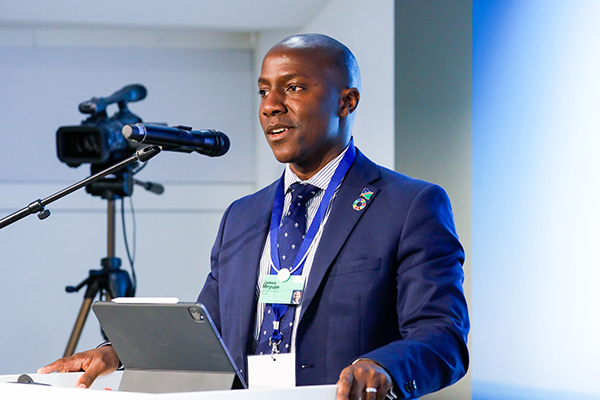Maihapa Ndjavera
Green hydrogen commissioner James Mnyupe advised Namibians not to get stuck on emotional issues of the past. “Namibia cannot deliver on her potential alone. We will need people from Khomas, Erongo, the north, south east Asia, Europe, China and the US. If you don’t want to share your space, your backyard and your beloved country with others to help you build it, you will stagnate and lag those who welcome skills and visitors – no doubt about that one,” warned Mnyupe.
His warning came after Namibia secured several agreements and partnerships in its quest to become a green hydrogen hub. Government mobilised more than N$10 billion at COP27 in Sharm El-Sheikh, Egypt, on Tuesday.
The commissioner stated the figures and the donors of grants to the Namibian government, namely: the US$43 million grant from Invest International, the €5 million grant from the European Investment Bank as well as the €500 million concessionary optional facility from the European Investment Bank to government, of which terms are to be negotiated.
Further, there was a €10 million grant from the European Investment Bank to Hyphen, €25 million concessionary loan to Hyphen during the feasibility period and a €10 million grant from the European Investment Bank to Hydrogen De France.
“These streams of capital will be essential bloodline required to build a green and blue economy as articulated by the economic advancement pillar of HPPII,” he said.
The economic advisor to President Hage Geingob added no one is forcing Namibia to take a loan: “It’s a facility, an option; if you want to access concessionary money at terms you couldn’t get with your credit rating, to build your port, your transmission lines, your roads – you can. Those assets you build will help you house many projects like the one you are seeking to build – they are your assets that will generate revenue for many generations to come. If you want to buy 24% equity in the project, you can. Previously, we just used to get 10% free carry; now we can buy stakes in these projects like a real investor and create long-term wealth for our citizens,” explained Mnyupe.
Furthermore, on Tuesday, Namibia launched SDG Namibia One at COP27, a new investment platform that will convene and coordinate activities related to the transition to and exploitation of the green hydrogen industry in Namibia.
SDG Namibia One aims to develop Namibia’s green hydrogen economy by streamlining access to public, private and philanthropic capital, linking finance to policy decisions, reducing transaction costs and accelerating high-quality project development.
A grant facility of €40 million was announced by the Dutch Prime Minister, Mark Rutte, as seed capital to establish the SDG Namibia One during the launch.
Mnyupe in a statement explained the strategy is to use the grant to catalyse additional development capital to the SDG Namibia One.
According to him, this will subsequently derisk private capital and facilitate further investments at scale to support the development of high-quality green hydrogen assets and associated value chains.
“Infrastructure development is faced with challenges such as scale, risk-sharing, speed and competition. SDG Namibia One is, therefore, a blended finance solution to address such challenges – and as such, it aims to mobilise up to €1 billion of investment capacity over the next 10 months,” he said.
Mnyupe noted the Namibian government has analysed this partnership in detail and concluded this established offering presents massive opportunities in many aspects as opposed to direct investment in underlying assets.


